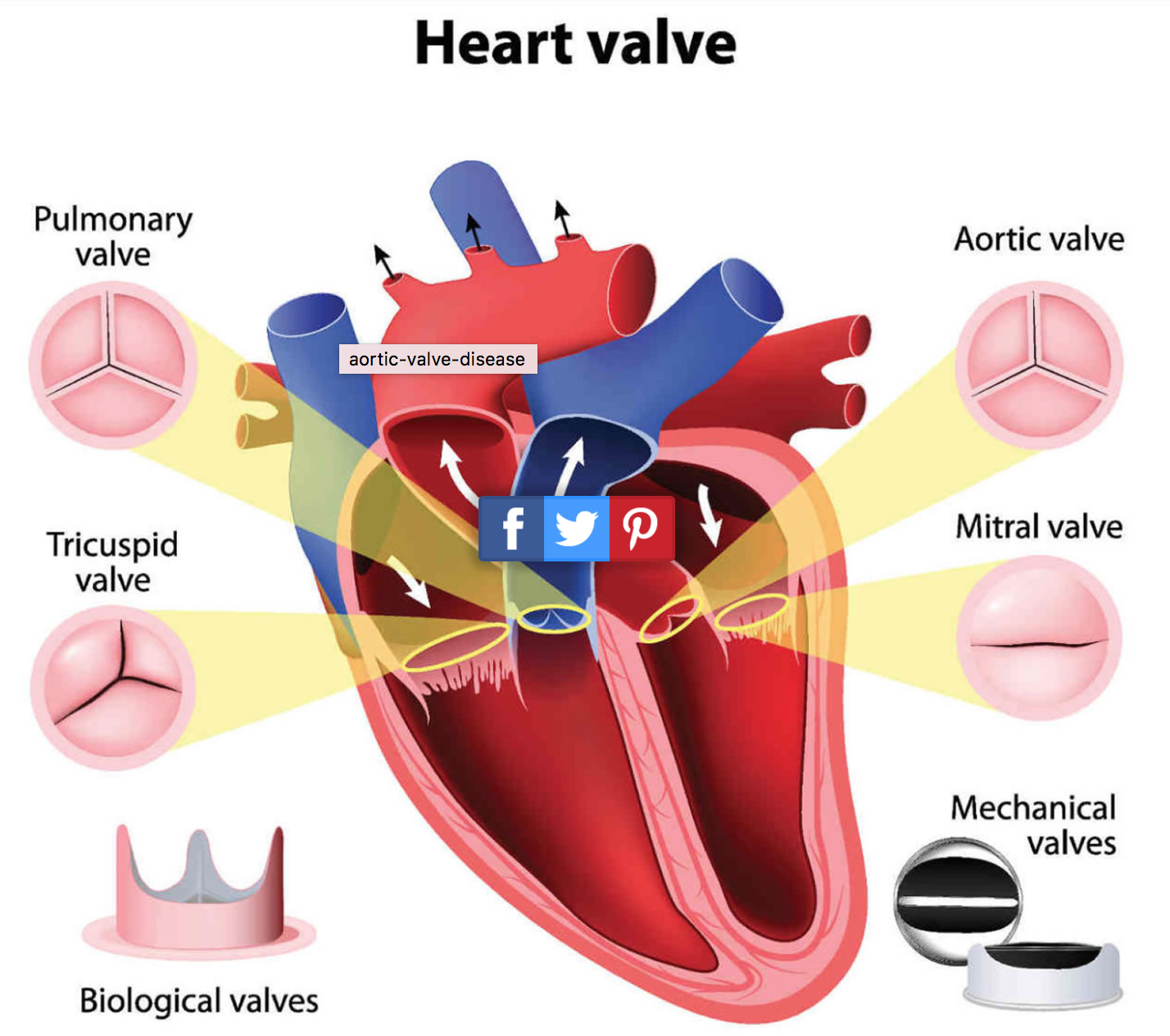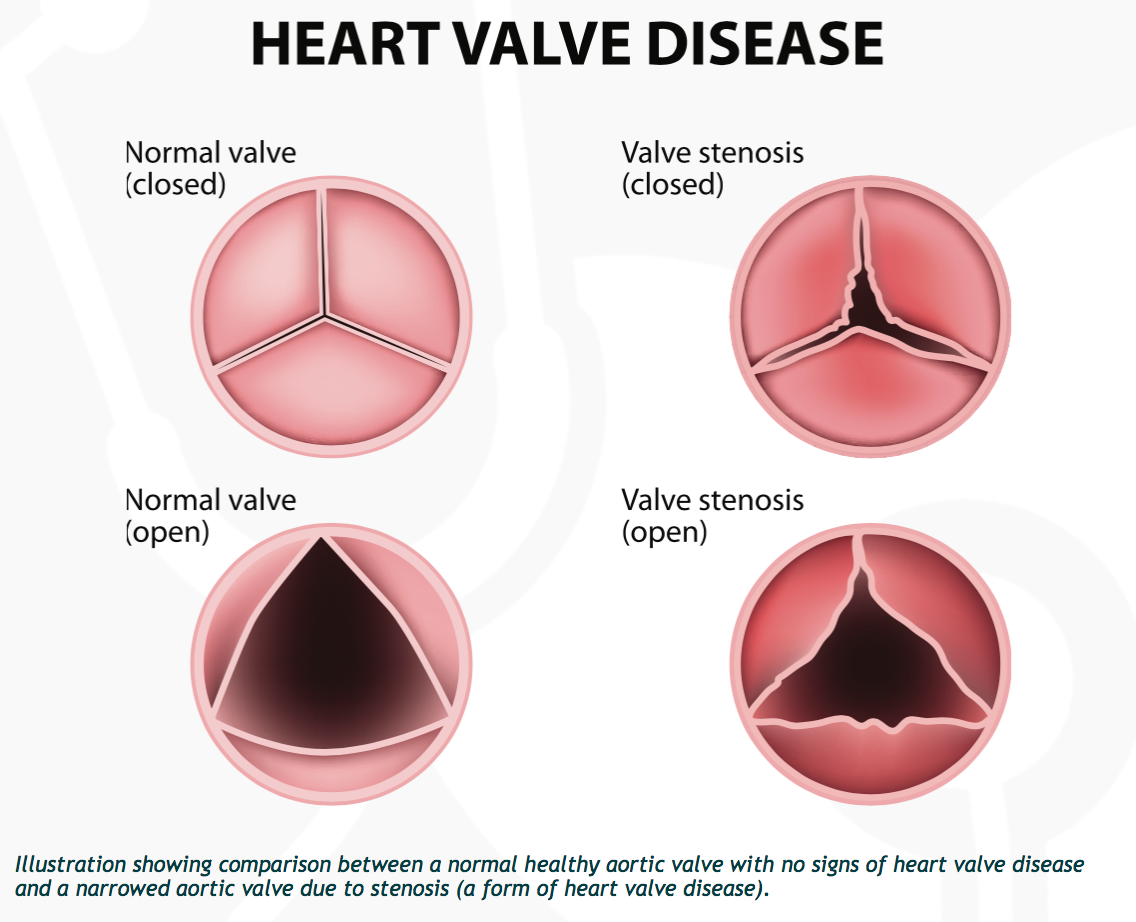Heart Valve Disease
QUICK LINKS
Heart Valve Disease – The Condition
The four main valves are:
- Aortic Valve
- Bicuspid valve/ Pulmonary valve
- Mitral Valve
- Tricuspid Valve

Types of heart valve disease:
Valve Stenosis or obstruction:
This is primarily due to age-related hardening (calcification) of the aortic valve leading to progressive narrowing. The valve can either be exceptionally narrow (therefore having a “stenosis”) or have a blockage which limits the blood flow through the valve. This may result in a “back-up” of blood behind the valve as if behind a dam, causing the heart to pump inefficiently or building up blood pressure in the lungs. This is most commonly associated with aortic stenosis or mitral stenosis.

Valve Regurgitation or insufficiency:
When a valve fails to close completely, the valve itself can become “leaky,” allowing blood to backwash down through the valve (called “regurgitation”). In addition, the valve may not ever completely move the volume of blood to the next appropriate chamber. This condition includes mitral regurgitation and aortic regurgitation.
Any of these valves can regurgitate or develop stenosis. However, the two most common valves that are affected are the Aortic and the Mitral. Below are a few of the most common heart valve disease that you might be diagnosed with:
Aortic Stenosis
This disease is most common in over 65s and is caused by calcification of the Aortic Valve. This hardening of the valve leads to a narrowing of the Aortic valve and less oxygenated blood passing through. The Aortic valve usually has three leaflets unless you have a bicuspid Aortic valve. Click here to read more about Aortic Stenosis.
Mitral Valve Prolapse/regurgitation
This is a commonly diagnosed form of valve regurgitation. Mitral valve prolapse is estimated to affect as many as 1 in 20 people. In serious cases, the mitral valve can become weakened or stretched, ballooning out and sometimes causing a backflow of blood. Click here to read more about Mitral Regurgitation.
Tricuspid Valve Disease
The tricuspid valve allows for the forward flow of blood from the right atrium to the ventricle but when it is diseased this flow of blood becomes either restricted or flows back through the valve in the wrong direction. When the flow of blood is restricted, this is referred to as tricuspid valve stenosis and means that the leaflets of the valve are not opening properly due to stiffening or calcification. When the valve no longer closes properly allowing for the flow of blood back through into the heart’s right atrium, this is referred to as tricuspid valve regurgitation. Click here for more information.
Bicuspid Aortic Valve
A bicuspid aortic valve is a type of abnormality in the aortic valve. In a bicuspid aortic valve, the valve has only two small leaflets, instead of the normal three. This condition can be present from birth, often referred to as ‘congenital’. Click here for more information.
Tips for family, friends and carers
Every patient has a different start to their pathway. Friends and family are important members of each part of it. This journey starts with recognising the signs and symptoms of valve disease in your loved ones.
Heart Valve Disease
QUICK LINKS
Patient Story: John
In 2020, John Wolfenden started to get increasingly breathless when walking, but it wasn’t until a family emergency that John sought help with his symptoms. John’s GP listened to his heart and heard a murmur, and just months later, John was being treated for aortic stenosis.

Read John’s story in full…



